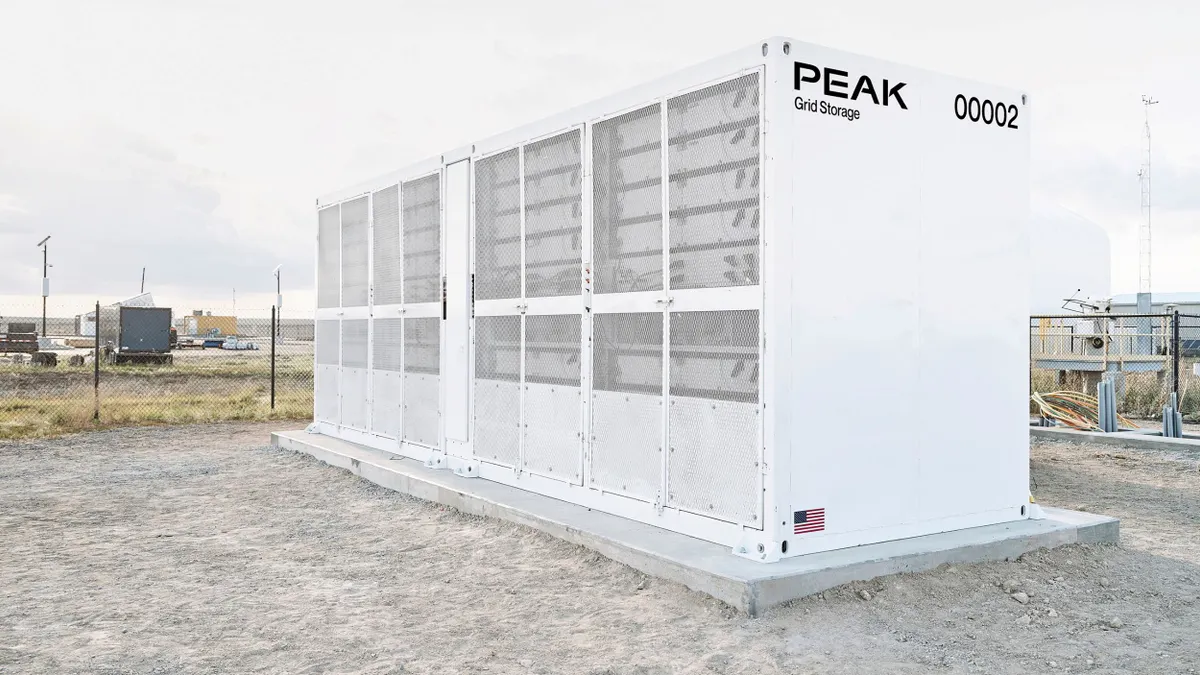Dive Brief:
-
Last year was a “breakout year” for photovoltaics combined with storage projects, which accounted for 67 of the 74 hybrid projects added in the United States in 2021, according to a report released Wednesday by the Department of Energy’s Lawrence Berkeley National Laboratory.
-
At 2.2 GW, there was more operating PV-hybrid energy storage capacity than standalone storage, which totaled 1.8 GW, by the end of last year, the LBNL researchers said, noting the PV+storage projects total 7 GWh compared with 3.5 GWh of existing stand-alone storage.
-
Looking ahead, there was 285 GW of hybrid solar and 19 GW of hybrid wind in interconnection queues at the end of 2021, according to the report.
Dive Insight:
Driven by falling battery prices and the growth of variable renewable generation, hybrid and co-located energy projects — mainly solar combined with battery storage — are surging across the United States.
There were 298 hybrid projects in the United States totaling 35.9 GW of generating capacity with 3.2 GW/8.1 GWh of storage by the end of last year, according to the report. Nearly half the projects were solar with storage with the rest a mixture of wind, fossil-fuel generation, nuclear generation and other resources in various configurations.
Some 74 hybrid projects started operating last year, up 32% from 2020 and totaling 6.1 GW, a 21% increase from the previous year, according to the report, which covers projects larger than 1 MW. Many of the projects involved adding batteries to existing generating facilities in California and Florida, the researchers said.
Also, there were 70% more hybrid plants in interconnection queues at the end of last year compared to 2020, the LBNL researchers said.
More than 35 GW of the solar+storage in the interconnection queues have executed interconnection agreements, according to the report. Interconnection agreements are a key project development milestone.
In the California Independent System Operator footprint, 95% of all solar capacity and 42% of all wind capacity in its interconnection queue would be built with energy storage, the highest percentages among all regions, according to the researchers.
“Commercial interest in California no doubt derives from the state’s energy policies, but is also driven by the pronounced daily wholesale pricing patterns induced by high solar penetrations that create arbitrage opportunities for storage that do not yet exist in the same magnitude in most other wholesale markets,” the researchers said in a summary of their report.
PV+storage power purchase agreement prices have fallen over time, the LBNL researchers said.
However, based on PPAs that price the PV and storage separately, “levelized storage adders” have recently increased somewhat to about $5,500/MW-month, $45/MWh-stored, which assumes a full cycle a day, or about $15/MWh-PV, not including Hawaii, the researchers said.
LBNL is holding a webinar on the report on Aug. 18.















